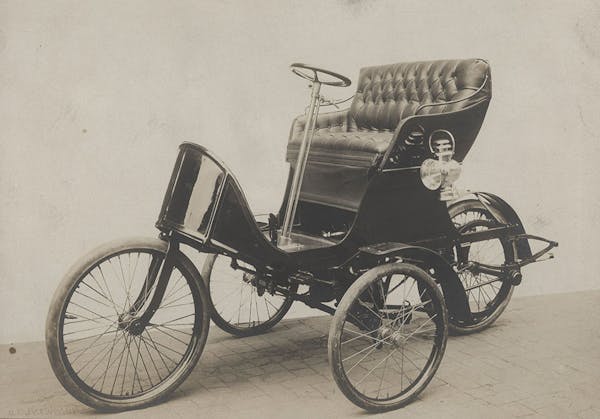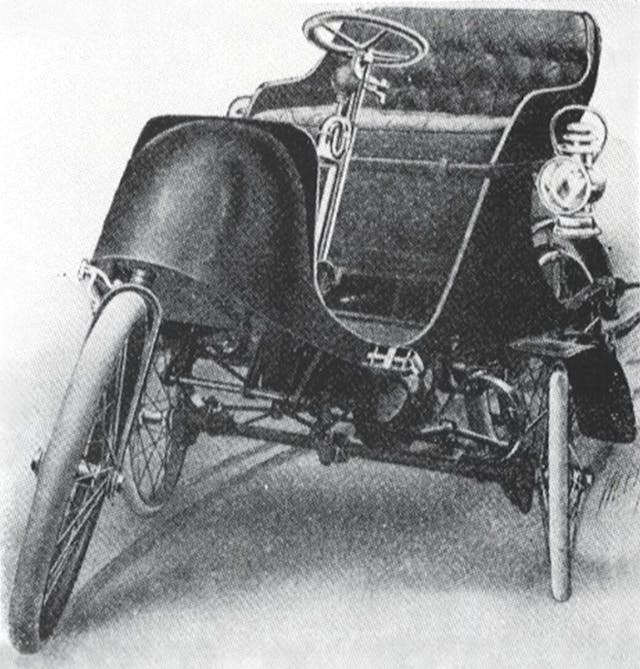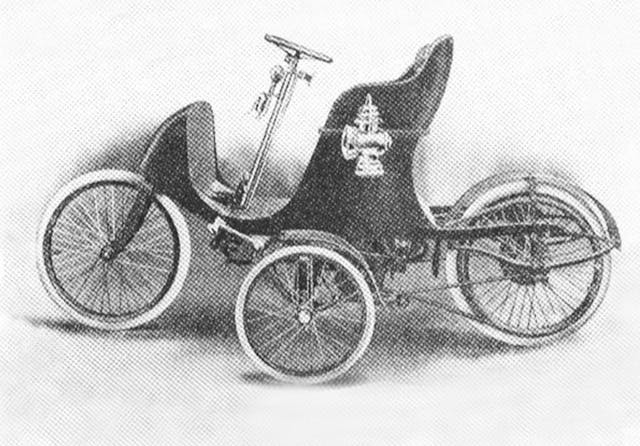The 1907 Autocycle was essentially a 45-mph bike with training wheels

Was the 1907 Autocycle a diamond in the rough? Considering it lasted only one model year and no one ever tried to replicate its unusual design, probably not. The Autocycle was definitely unique, however, especially when it came to wheel configuration.
Built by the Vandegrift Automobile Company of Philadelphia, the odd-looking vehicle had four wire wheels arranged in a diamond pattern, with one wheel in front, two slightly smaller wheels on the sides, and one in the rear. The wheel arrangement was designed to give the Autocycle a short turning radius.
A news story at the time reported that James N. Vandegrift—with the assistance of Henry G. Morris and Pedro G. Salom, who previously built electric vehicles—created his Autocycle “on the principle of the bicycle,” which explains its name. Power was supplied to the rear wheel by a six-horsepower, two-cylinder, air-cooled gasoline engine. The 380-pound, two-passenger Autocycle was steered via its front wheel. Maximum speed was estimated at 45 mph.

“This vehicle will carry readily a heavy person who might persist in sitting upon one side instead of at the middle of the vehicle,” Vandegrift told trade magazine The Horseless Age in 1907. “A true bicycle condition is, of course, only realized when the vehicle is perfectly balanced and the weights are equalized, and under this condition the highest speed is attained with practically no weight upon the balance wheels. In practice, however, it is found that an excess of 125 to 200 pounds in weight on either side of the vehicle makes little material difference in operation, and may be readily compensated for by the check spring device upon the balance axle. The links in connection with the balance springs allow the small side wheels to follow depressions and irregularities, thus remaining in contact with the surface of the highway even when they carry no weight.”

In other words, the Autocycle’s smaller side wheels were simply there to help balance the vehicle, much like training wheels on a bicycle. Although the design seemed logical in theory, it worked best on paved city streets but struggled on rough and rutted roads, where the side wheels made it more difficult to maneuver.
There is no record of how many Autocycles were built before Vandegrift threw in the towel. Ironically, a motorcycle with a similar name—the Excelsior Auto-Cycle—found success during the same era.
We’re guessing people found little need for a motorbike with training wheels.

